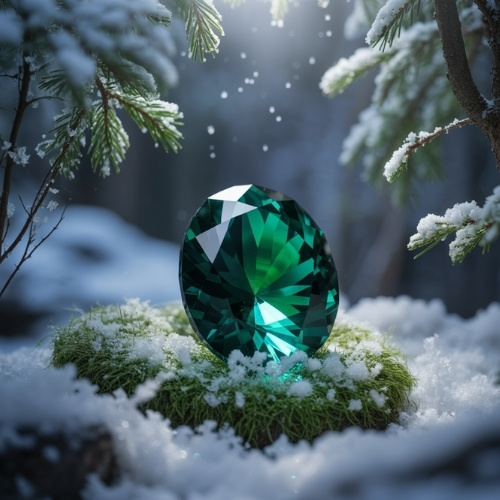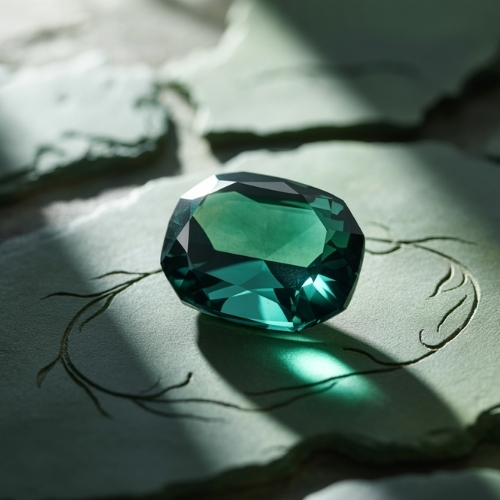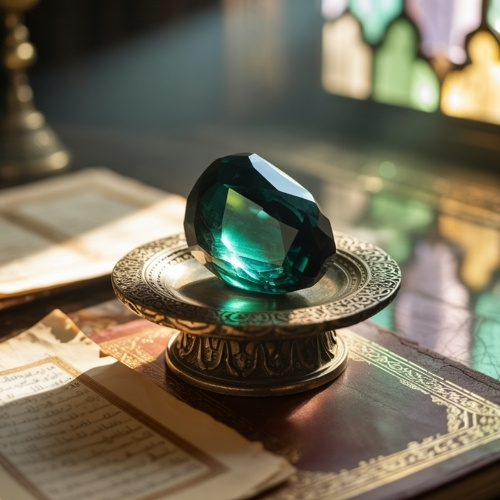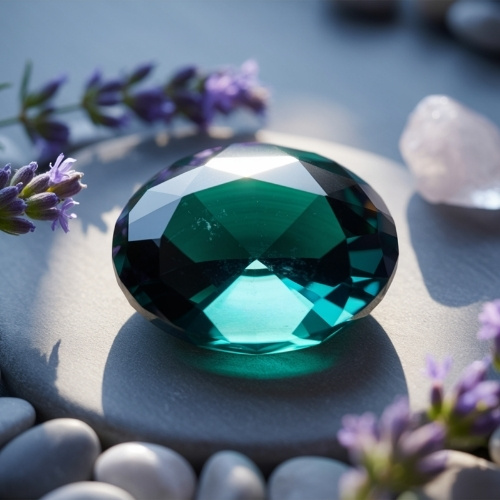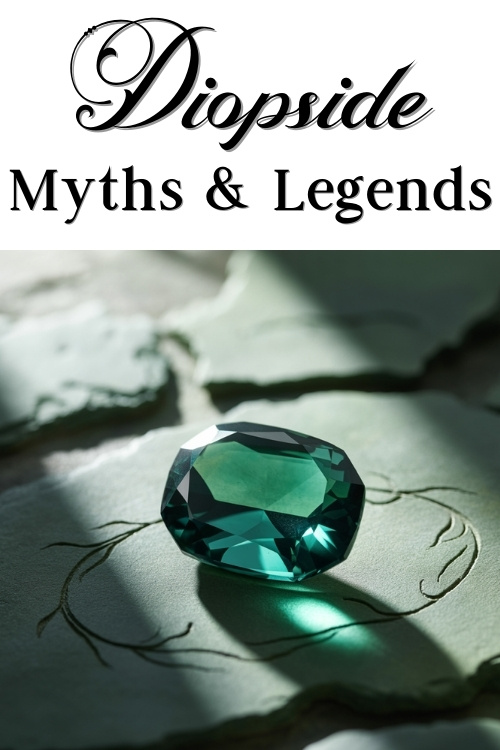Diopside glows with the richness of a forest in sunlight, vivid, green, and quietly alive. You might expect a stone with such a colour to have left its mark on ancient legends. But diopside slipped under the radar for centuries.
It wasn’t until the 1800s that it was finally recognised as a gem in its own right. Before then, it was often mistaken for emerald, tourmaline, or even green garnet. Without a name of its own, it travelled through history almost unnoticed, hiding in plain sight among its famous cousins.
As no myths speak directly of diopside, I’ve decided to explore its symbolic roots. Looking into the beliefs of the places it comes from, the colour traditions it belongs to, and the meanings it’s come to carry today.
🔗These ancient stories often influence how we view diospide today, from spiritual qualities to symbolic associations. Discover the full range of Diopside’s meanings here
Origins: Echoes of Forest Spirits
Much of the world’s diopside comes from Eastern Siberia, especially the Inagli region of Yakutia. A land of vast taiga forests, frozen rivers, and age-old spiritual traditions.
In the shamanic beliefs of many Siberian Indigenous cultures, every part of nature is alive with spirit. Stones, trees, rivers, animals. All are woven with energy and meaning.
A vivid green crystal like diopside, found deep within the earth, might be seen as a token of the forests power or a gift from the land itself.
Even though there aren’t any specific stories about diopside itself, it’s easy to imagine how a green stone would have been seen here. As part of the living world, carrying a quiet link to the forest’s strength and the memory of the earth.
Colour Symbolism: The Ancient Meaning of Green
Across cultures, green has long symbolised healing, balance, and new life. It’s the colour of spring after winter, of renewal after hardship, of growth that rises slowly but surely.
Even if diopside wasn’t recognised in ancient times, it naturally slips into the same symbolic world as jade and emerald. Green gems that carried deep meaning across cultures.
In ancient Egypt, green was the colour of rebirth and eternal life. In medieval Europe, green stones were thought to calm the heart and attract prosperity.
Diopside belongs in this story too. Not as a stone of grandeur or royal display, but as one connected to restoration, clarity, and steady growth.
Sacred Green in Islamic Symbolism
Some of today’s diopside deposits are found in northern Pakistan, especially in the mountainous region of Gilgit-Baltistan. While there are no traditional Islamic myths surrounding diopside specifically, the colour green holds deep spiritual meaning in many parts of the Islamic world.
Green is associated with paradise, peace, and divine blessing. It was said to be the Prophet Muhammad’s favourite colour, and it appears often in sacred art and clothing.
In this light, a richly green gem like diopside can be seen as a symbol of hope, protection, and harmony with the divine. Even without its own legends, the colour itself carries a sacred beauty.
Modern Lore: A Stone of the Heart and the Mind
Today, diopside is embraced by crystal practitioners as a gentle but potent ally, especially in its deep green chrome form.
It’s often linked to the heart chakra, where it’s said to support emotional healing, release grief, and encourage compassionate connection.
Some people even call diopside a student’s stone, since it’s thought to sharpen focus. It’s said to help new ideas sink in, and encourage curiosity instead of fear when facing challenges.
Its energy is described as calming and steady, much like the feeling of walking barefoot through a quiet forest, or feeling sunlight through green leaves.
No Myths Needed
Not every stone needs an ancient myth to feel timeless. Some speak through their colour alone, through the way they make us feel, and through the quiet pull they have on the heart.
Diopside is a gem that invokes living things: moss underfoot, leaves swaying in the breeze, the calm breath of the earth beneath us. It reminds us that not all power is loud, and not all beauty needs a crown of myth to shine.
Whether you wear it, work with it, or simply admire it, diopside invites a return to nature, to clarity, to a steadier kind of strength. A green spark in the stillness. A small, deep-rooted gift from the earth.
🔗If you’re working with diopside in jewellery, take a look at my Jewellers Guide to Diospide, where I cover identification tips, common treatments, setting considerations and more.
📌 Save these diopside myths and legends so you can find them again. They also make great marketing content, so feel free to retell them to your audience!

